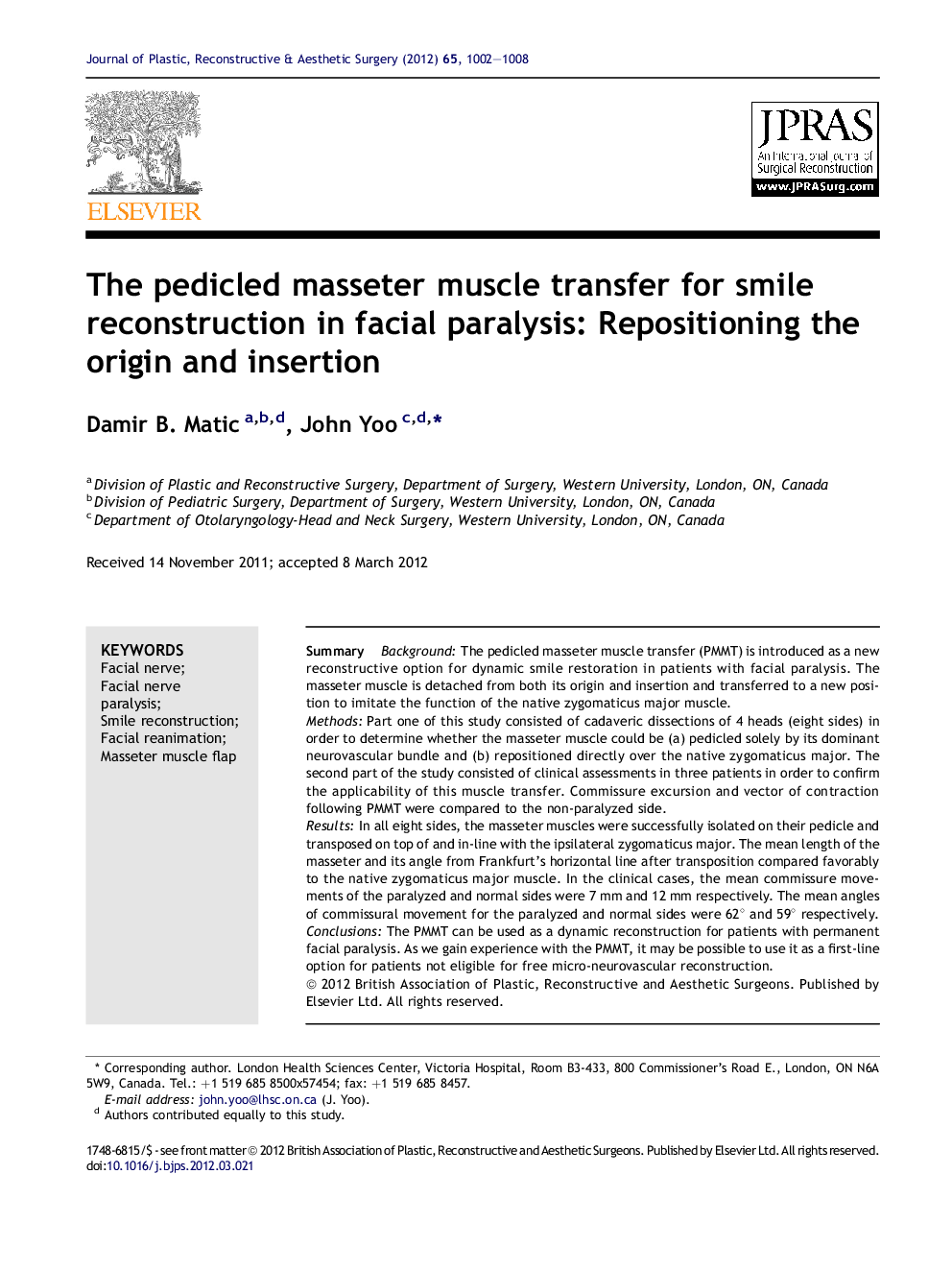| Article ID | Journal | Published Year | Pages | File Type |
|---|---|---|---|---|
| 4119468 | Journal of Plastic, Reconstructive & Aesthetic Surgery | 2012 | 7 Pages |
SummaryBackgroundThe pedicled masseter muscle transfer (PMMT) is introduced as a new reconstructive option for dynamic smile restoration in patients with facial paralysis. The masseter muscle is detached from both its origin and insertion and transferred to a new position to imitate the function of the native zygomaticus major muscle.MethodsPart one of this study consisted of cadaveric dissections of 4 heads (eight sides) in order to determine whether the masseter muscle could be (a) pedicled solely by its dominant neurovascular bundle and (b) repositioned directly over the native zygomaticus major. The second part of the study consisted of clinical assessments in three patients in order to confirm the applicability of this muscle transfer. Commissure excursion and vector of contraction following PMMT were compared to the non-paralyzed side.ResultsIn all eight sides, the masseter muscles were successfully isolated on their pedicle and transposed on top of and in-line with the ipsilateral zygomaticus major. The mean length of the masseter and its angle from Frankfurt's horizontal line after transposition compared favorably to the native zygomaticus major muscle. In the clinical cases, the mean commissure movements of the paralyzed and normal sides were 7 mm and 12 mm respectively. The mean angles of commissural movement for the paralyzed and normal sides were 62° and 59° respectively.ConclusionsThe PMMT can be used as a dynamic reconstruction for patients with permanent facial paralysis. As we gain experience with the PMMT, it may be possible to use it as a first-line option for patients not eligible for free micro-neurovascular reconstruction.
